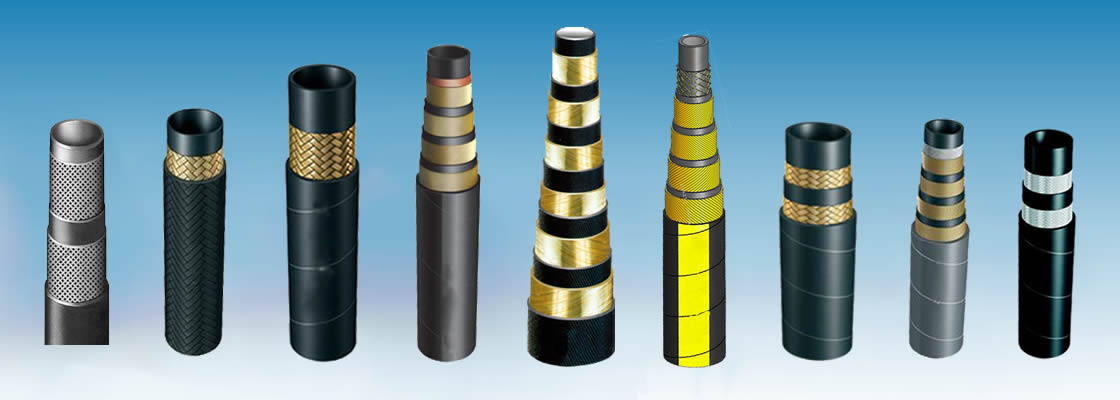Hydraulic Hose FAQs for your better knowledge
Established in 1994, Hebei Ston Hose Factory has grown up into a leading hydraulic hose manufacturer in China. With the continuous economic development, hydraulic hoses have been extensively used in industries, mines, steel works and chemical factories. Compared to rigid pipes, hydraulic rubber hose can bend to specified radius and resist vibration damage.
Our factory has introduced advanced hose making machinery and production process to improve hose quality and satisfy customer's stringent requirements. In recent years, we've exported to many countries including America, Britain, France, German, East Asia and other countries.
There are some of frequently asked questions about hydraulic hose. If you have any problem about hose selection, hose size determination and order tips, click here for detailed answer. Or you can email or call us directly.
Q1: Is single wire braid really worse than double wire braid?
A: Many users are often confused by this problem. As a result of high tensile steel wire, single wire braided hydraulic hose is workable to support specified working pressure. For this reason, it is not necessary to employ double wire braid hose. However, when the working environments are abrasive and corrosive, two braided hydraulic hose is a better alternative. The extra braid protects interior rubber and greatly extends hose service life.
Q2: Are your hydraulic hoses manufactured according to SAE J517?
A: SAE J517 hydraulic hose standard serves as the most popular benchmark today. Most manufactures have taken it as a production guideline. However, not all hydraulic hoses are strictly produced according to J517. In most cases, our hydraulic hoses are produced depending on our customers' specified applications.
Q3: What is the difference between spiral wire and braid wire?
Wire reinforcement of hydraulic hose have two main types - braided and spiral. Medium or high pressure hoses usually features single- and double-wire braided construction. Wire braided hoses are usually applied to heavy-duty trucks, construction equipment. Its main advantage is great flexibility.
Spiral wire hoses - four or six, provide super high pressure, excellent kick resistance and high abrasion resistance. These hoses are used in more powerful equipment and earth movers.
Hot Products
SAE 100R15 Six-Wire Hose

SAE 100R15 hydraulic hose has 6,000 psi constant pressure and high impulse strength, and is used for agriculture, mining, construction equipment.
SAE 100R13 Four Spiral Wire Hose

SAE 100R13 hydraulic hose gives 5075 psi constant pressure and is widely used in equipment including agriculture, industrial, logging & marine.
2-Wire Braid Hose SAE 100R2AT

2-wire braid SAE 100R2AT hydraulic hose provides high pressure to mobile equipment in mining, forestry, mobile equipment and construction.
SAE 100R1AT Singe Wire Braid Hose

SAE 100R1 medium pressure hydraulic hose has high tensile braid wire reinforcement. High abrasion and high temp types are supplied.
Technology List
Seven reasons for hose failure
There are mainly seven reasons causing hose failure including improper routing, excessively operating temperature and pressure and chemicals corrosion.
Hose Construction
A typical rubber hose is composed of at least three parts - inner tube, reinforcement and cover. Their performance will affect hose usage life
How to determine fluid velocity & hose ID
Hose tube carrying the pressure fluid will be influenced by hose bore size, fluid rate and velocity. Higher velocity will shorten tube life.
Tips of ordering hydraulic hose
Hydraulic hose selection tips save your time of ordering right type hose. Standard hydraulic hose and special hoses are all produced.
Seven effective steps to help you select proper hydraulic hose
Hydraulic hoses should be carefully selected according to 7 steps - size, temperature, application, media, pressure, ends and delivery.




